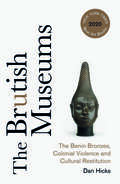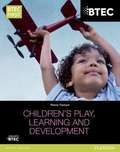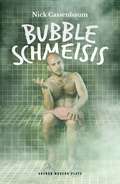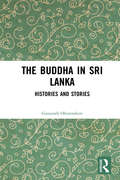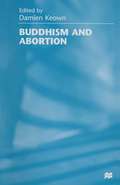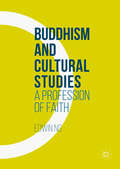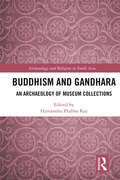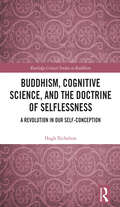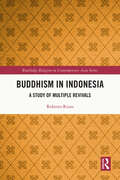- Table View
- List View
The Brutish Museums: The Benin Bronzes, Colonial Violence and Cultural Restitution
by Dan HicksWalk into any European museum today and you will see the curated spoils of Empire. They sit behind plate glass: dignified, tastefully lit. Accompanying pieces of card offer a name, date and place of origin. They do not mention that the objects are all stolen. Few artefacts embody this history of rapacious and extractive colonialism better than the Benin Bronzes - a collection of thousands of metal plaques and sculptures depicting the history of the Royal Court of the Obas of Benin City, Nigeria. Pillaged during a British naval attack in 1897, the loot was passed on to Queen Victoria, the British Museum and countless private collections. The story of the Benin Bronzes sits at the heart of a heated debate about cultural restitution, repatriation and the decolonisation of museums. In The Brutish Museum, Dan Hicks makes a powerful case for the urgent return of such objects, as part of a wider project of addressing the outstanding debt of colonialism.
Bryman's Social Research Methods
by Tom Clark Alan Bryman Liam Foster Luke SloanClear, comprehensive, and trusted, Bryman's Social Research Methods has supported over a quarter of a million students through their research methods course and research project. Spanning theory and practice and covering quantitative, qualitative, and mixed methods, this bestselling text offers unrivalled coverage of the whole research process. The authors have worked closely with lecturers and students in thoroughly updating the sixth edition to reflect the current social science landscape, and carefully streamlining content to make it relevant and appealing to today's students. As a result, the text's comprehensive coverage - which includes many new examples and additional material on areas such as social media research and big data - is now even clearer, more focused, and easier to navigate. In addition to many new examples of published research, this edition features the insights of a panel of recent graduates from their experiences of researching a variety of fascinating topics, including attitudes towards the LGBT+ community on social media, the experiences of Pakistani Muslim single mothers, and the impact of screen time on sleep. 'Learn from experience' boxes in every chapter contain their candid reflections on the successes and challenges of their projects, and their advice for student researchers. Digital formats and resources Bryman's Social Research Methods is available for students and institutions to purchase in a variety of formats, and is supported by extensive online resources. The e-book offers a mobile experience and convenient access, with learning resources embedded and hyperlinked throughout to offer self-assessment activities and extra support: www.oxfordtextbooks.co.uk/ebooks The student resources, accessible both online and via the e-book, include: - Over 300 multiple choice questions - A 'Research process in practice' simulation - Student researcher's toolkit - Answers to the end-of-chapter questions, including audio commentary from the authors - A flashcard glossary - Data analysis software tutorials covering SPSS, NVivo, R, and Stata - Guidance on using Excel in data analysis - 'Learn from experience' videos, expanding on the graduate insights provided in the book - Regularly-updated video reflections from the authors on the impact of the Covid-19 pandemic on social research The book's teaching resources, accessible online to adopting lecturers, include: - PowerPoint slides for every chapter - 250 test bank questions - 25 seminar outlines - 75 exam- or coursework-based questions - Figures and tables from the book
BTEC First in Health and Social Care: Revision Workbook (PDF)
by Btec* This Revision Workbook delivers hassle-free question practice, covering one topic per page and avoiding lengthy set up time. * Build your confidence with guided practice questions, before moving onto unguided questions and practice tests. * With one-to-one page correspondence between the Workbook and the Revision Guide, this hugely popular Revision series offers the best value available for BTEC learners. * Covers both externally assessed Units for 2012 BTEC First in Health and Social Care (Units 1 and 9).
BTEC Level 2 Firsts in Children's Play, Learning and Development Student Book (1st edition) (PDF)
by Penny TassoniResources designed to support learners of the new next generation BTEC First in Children's Play, Learning and Development specification*. Covers the underpinning knowledge and understanding for all core , mandatory and optional units for the Award and Certificate and all core and mandatory units for the Extended Certificate. The attractive, accessible layout is packed with learning features, which draw out key points and bring topics to life. Provides support and practice for learners as they work towards the Award, Certificate and Extended Certificate. Units include plenty of activities and assessment guidance to help learners achieve their potential. Case Studies reflect the work-related nature of the qualification, so that learners are more able to put theory into practice in real-world settings. Assessment activities help learners to achieve their potential in internally-assessed units and support external assessment. * From 2012, Pearson Education's BTEC First qualifications have been under re-development, so schools and colleges could be teaching the existing 2010 specification or the new next generation 2012-2013 specification. There are different Student Books to support each specification. If learners are unsure, they should check with their teacher or tutor.
Bubble Schmeisis (Oberon Modern Plays)
by Nick CassenbaumBubbemeises Noun. Yiddish; a grandmother's story, a tall story, an old wives' tale. Nick Cassenbaum invites you into the warmth of the Canning Town Schvitz, East London’s last authentic bath house. Amongst the steam and ritual Nick will take you on a journey to find the place he belongs. Bubble Schmeisis is full of intimate and personal true stories about identity, home and getting schmeised (washed) by old men.
Bubbles & Bodies - Neue Öffentlichkeiten zwischen sozialen Medien und Straßenprotesten: Interdisziplinäre Erkundungen (Edition Kulturwissenschaft #218)
by Lukas Kaelin Andreas Telser Ilaria Hoppe»Öffentlichkeit« ist umstritten und umkämpft und sie scheint einem beschleunigten Wandel zu unterliegen. Soziale Medien bieten in Echtzeit jedem die Möglichkeit zur politischen Teilhabe. »Verkörperte« Versammlungen fordern verstärkt die Politik heraus, doch ohne die virtuellen »Bubbles« und die materiellen »Bodies« ist die gegenwärtige Öffentlichkeit nicht mehr zu denken. Die Beiträger*innen des Bandes thematisieren unterschiedliche Aspekte dieser neuen Öffentlichkeit und untersuchen besonders die Relevanz von Körpern, Bildern und hybriden Medien sowie deren ökonomische Bedingungen. Mit Perspektiven aus der Philosophie, der Theologie und der Kultur- und Kunstwissenschaft geht es um eine Neubestimmung gegenwärtiger Öffentlichkeit.
Buch-Aisthesis: Philologie und Gestaltungsdiskurs (Medien- und Gestaltungsästhetik #14)
by Christopher Busch Oliver RufLiteratur kann auch als Verbund von Medien betrachtet werden, die in Kooperations- und Konkurrenzverhältnissen auftreten. Dies wird umso deutlicher, wenn aus literatur- und designwissenschaftlicher Perspektive auf die Beobachtung der Differenz von typographischen und anderen, grundsätzlich nonverbalen visuellen Daten abgestellt wird. Die Beiträger*innen des Bandes leiten daraus ein Verhältnis von Literatur- und Kunstwissenschaft zu ihren Gegenständen ab, das nicht zuletzt zu einer neuen Aufmerksamkeit für die skripturale und typographische Materialität und Medialität der Literatur führt. Dabei geht es um die Theorie der Reflexion und die Praxis der Erzeugung einer je spezifischen Buch-Ästhetik.
Buch-Aisthesis: Philologie und Gestaltungsdiskurs (Medien- und Gestaltungsästhetik #14)
by Oliver Ruf Christopher BuschLiteratur kann auch als Verbund von Medien betrachtet werden, die in Kooperations- und Konkurrenzverhältnissen auftreten. Dies wird umso deutlicher, wenn aus literatur- und designwissenschaftlicher Perspektive auf die Beobachtung der Differenz von typographischen und anderen, grundsätzlich nonverbalen visuellen Daten abgestellt wird. Die Beiträger*innen des Bandes leiten daraus ein Verhältnis von Literatur- und Kunstwissenschaft zu ihren Gegenständen ab, das nicht zuletzt zu einer neuen Aufmerksamkeit für die skripturale und typographische Materialität und Medialität der Literatur führt. Dabei geht es um die Theorie der Reflexion und die Praxis der Erzeugung einer je spezifischen Buch-Ästhetik.
Buck Clayton's Jazz World
by Buck ClaytonSpanning nearly seventy years, Buck Clayton's autobiography offers fascinating insights into not only the life of one of the most significant trumpeters and bandleaders in jazz, but also American social history in general. This engaging volume depicts Clayton's childhood in Parson, Kansas, where he learned how to play the trumpet and first came into contact with church and gospel music. It then details his move to the West Coast in the 1930s when he began to play jazz professionally. Clayton recounts the many important events that followed, including a Hollywood-style wedding, his trip to Shanghai in 1934 with his band, his involvement with the Count Basie Orchestra in New York, his enlistment in the U.S. Army in the 1940s, his work as a soloist and leader in both the U.S. and Europe, and his later career as an arranger and composer, as well as his days spent lecturing in jazz studies at Hunter College, City University of New York. Chronicling his encounters with many of the most influential jazz figures, such as Billie Holiday, Count Basie, Coleman Hawkins, Lester Young, and Jimmy Rushing, Clayton presents a fascinating record of jazz history, both in the United States and abroad.
The Buddha in Sri Lanka: Histories and Stories
by Gananath ObeyesekereThis book examines culture, religion and polity in the context of Buddhism. Gananath Obeyesekere, one of the foremost analytical voices from South Asia develops Freud’s notion of ‘dream work’, the ‘work of culture’ and ideas of no-self (anatta) to understand Buddhism in contemporary Sri Lanka. This work offers a restorative interpretation of Buddhist myths in contrast to the perspective involving deconstruction. The book deals with a range of themes connected with Buddhism, including oral traditions and stories, the religious pantheon, philosophy, emotions, reform movements, questions of identity and culture, and issues of modernity. This fascinating volume will greatly interest students, teachers and researchers of religion and philosophy, especially Buddhism, ethics, cultural studies, social and cultural anthropology, Sri Lanka and modern South Asian history.
The Buddha in Sri Lanka: Histories and Stories
by Gananath ObeyesekereThis book examines culture, religion and polity in the context of Buddhism. Gananath Obeyesekere, one of the foremost analytical voices from South Asia develops Freud’s notion of ‘dream work’, the ‘work of culture’ and ideas of no-self (anatta) to understand Buddhism in contemporary Sri Lanka. This work offers a restorative interpretation of Buddhist myths in contrast to the perspective involving deconstruction. The book deals with a range of themes connected with Buddhism, including oral traditions and stories, the religious pantheon, philosophy, emotions, reform movements, questions of identity and culture, and issues of modernity. This fascinating volume will greatly interest students, teachers and researchers of religion and philosophy, especially Buddhism, ethics, cultural studies, social and cultural anthropology, Sri Lanka and modern South Asian history.
Buddha to Krishna: Life and Times of George Keyt
by Yashodhara DalmiaThis book traces the emergence of modernism in art in South Asia by exploring the work of the iconic artist George Keyt. Closely interwoven with his life, Keyt’s art reflects the struggle and triumph of an artist with very little support or infrastructure. He painted as he lived: full of colour, turmoil and intensity. In this compelling account, the author examines the eventful course of Keyt’s journey, bringing to light unknown and startling facts: the personal ferment that Keyt went through because of his tumultuous relationships with women; his close involvement with social events in India and Sri Lanka on the threshold of Independence; and his somewhat angular engagement with artists of the ’43 Group. A collector’s delight, including colour plates and black and white photographs, reminiscences and intimate correspondences, this book reveals the portrait of an artist among the most charismatic figures of our time. This book will be of interest to scholars and researchers of art and art history, modern South Asian studies, sociology, cultural studies as well as art aficionados.
Buddha to Krishna: Life and Times of George Keyt
by Yashodhara DalmiaThis book traces the emergence of modernism in art in South Asia by exploring the work of the iconic artist George Keyt. Closely interwoven with his life, Keyt’s art reflects the struggle and triumph of an artist with very little support or infrastructure. He painted as he lived: full of colour, turmoil and intensity. In this compelling account, the author examines the eventful course of Keyt’s journey, bringing to light unknown and startling facts: the personal ferment that Keyt went through because of his tumultuous relationships with women; his close involvement with social events in India and Sri Lanka on the threshold of Independence; and his somewhat angular engagement with artists of the ’43 Group. A collector’s delight, including colour plates and black and white photographs, reminiscences and intimate correspondences, this book reveals the portrait of an artist among the most charismatic figures of our time. This book will be of interest to scholars and researchers of art and art history, modern South Asian studies, sociology, cultural studies as well as art aficionados.
Buddhism and Abortion
by Damien KeownAbortion is arguably the most controversial and divisive moral issue of modern times, but up until now the debate has taken place almost exclusively within a Western cultural, religious and philosophical context. For the past three decades in the West arguments both for and against abortion have been mounted by groups of all kinds, from religious fundamentalists to radical feminists and every shade of opinion in between. Rather than mutual understanding, however, the result has been the polarisation of opinion and the deepening of entrenched positions. In the face of this deadlock a new perspective is urgently required. Buddhism is an ancient tradition which over the centuries has refined its distinctive beliefs and values in the course of a long interaction with the major cultures of Asia. As Buddhism continues to engage the attention of the West, the time is now opportune for its views on abortion to be heard. This is the first book to explore the abortion question from a range of Buddhist cultural and ethical perspectives. The approach is interdisciplinary and will be of relevance to those working in fields such as law, ethics, medicine, philosophy, religion, the social sciences and women's studies.
Buddhism and Cultural Studies: A Profession of Faith
by Edwin NgThis book explores the reciprocity between Buddhist, Derridean, and Foucauldian understandings about ethics, subjectivity, and ontological contingency, to investigate the ethical and political potential of insight meditation practice. The book is narrated from the perspective of a postcolonial ‘Western Buddhist’ convert who, despite growing up in Singapore where Buddhism was a part of his disaporic ‘Chinese’ ancestral heritage, only embraced Buddhism when he migrated to Australia and discovered Western translations of Buddhist teachings. Through an autoethnography of the author’s Buddhist-inspired pursuit of an academic profession, the book develops and professes a non-doctrinal understanding of faith that may be pertinent to ‘believers’ and ‘non-believers’ alike, inviting the academic reader in particular to consider the (unacknowledged) role of faith in supporting scholarly practice. Striking a careful balance between critical analysis and self-reflexive inquiry, the book performs in all senses of the word, a profession of faith.
Buddhism and Gandhara: An Archaeology of Museum Collections (Archaeology and Religion in South Asia)
by Himanshu Prabha RayGandhara is a name central to Buddhist heritage and iconography. It is the ancient name of a region in present-day Pakistan, bounded on the west by the Hindu Kush mountain range and to the north by the foothills of the Himalayas. ‘Gandhara’ is also the term given to this region’s sculptural and architectural features between the first and sixth centuries CE. This book re-examines the archaeological material excavated in the region in the nineteenth and early twentieth centuries and traces the link between archaeological work, histories of museum collections and related interpretations by art historians. The essays in the volume underscore the diverse cultural traditions of Gandhara – from a variety of sources and perspectives on language, ethnicity and material culture (including classical accounts, Chinese writings, coins and Sanskrit epics) – as well as interrogate the grand narrative of Hellenism of which Gandhara has been a part. The book explores the making of collections of what came to be described as Gandhara art and reviews the Buddhist artistic tradition through notions of mobility and dynamic networks of transmission. Wide ranging and rigorous, this volume will appeal to scholars and researchers of early South Asian history, archaeology, religion (especially Buddhist studies), art history and museums.
Buddhism and Gandhara: An Archaeology of Museum Collections (Archaeology and Religion in South Asia)
by Himanshu Prabha RayGandhara is a name central to Buddhist heritage and iconography. It is the ancient name of a region in present-day Pakistan, bounded on the west by the Hindu Kush mountain range and to the north by the foothills of the Himalayas. ‘Gandhara’ is also the term given to this region’s sculptural and architectural features between the first and sixth centuries CE. This book re-examines the archaeological material excavated in the region in the nineteenth and early twentieth centuries and traces the link between archaeological work, histories of museum collections and related interpretations by art historians. The essays in the volume underscore the diverse cultural traditions of Gandhara – from a variety of sources and perspectives on language, ethnicity and material culture (including classical accounts, Chinese writings, coins and Sanskrit epics) – as well as interrogate the grand narrative of Hellenism of which Gandhara has been a part. The book explores the making of collections of what came to be described as Gandhara art and reviews the Buddhist artistic tradition through notions of mobility and dynamic networks of transmission. Wide ranging and rigorous, this volume will appeal to scholars and researchers of early South Asian history, archaeology, religion (especially Buddhist studies), art history and museums.
Buddhism and the Political Process
by Hiroko KawanamiThis study examines the impact of Buddhism on the political process of Asian countries in recent times. The intersection between Buddhism and politics; religious authority and political power is explored through the engagement of Buddhist monks and lay activists in the process of nation-building, development, and implementation of democracy.
Buddhism, Cognitive Science, and the Doctrine of Selflessness: A Revolution in Our Self-Conception (Routledge Critical Studies in Buddhism)
by Hugh NicholsonThis book examines the relationship between Buddhist philosophy and scientific psychology by focusing on the doctrine of No-self. The hypothesis is that No-self can function as an instrument of counter-induction, that is, an alternative conceptual scheme that exposes by contrast the intuitive or "folk" theoretical presuppositions sedimented in our perception of ourselves and others. When incorporated into regimens of meditative and ritual practice, the No-self doctrine works to challenge and disrupt our naïve folk psychology. The author argues that there is a fruitful parallel between the No-self doctrine and anti-Cartesian trends in the cognitive sciences. The No-self doctrine was the product of philosophical speculation undertaken in the context of hegemonic struggles with both Buddhist and non-Buddhist rivals, and the classic No-self doctrine, accordingly, is a somewhat schematic and largely accidental anticipation of the current scientific understanding of the mind and consciousness. Nevertheless, inasmuch as it challenges and unsettles the seemingly self-evident certitudes of folk psychology, it prepares the ground for the revolution in our self-conception promised by the emerging cognitive scientific concept of mind. A novel contribution to the study of Buddhist Philosophy, the book will also be of interest to scholars of Buddhist Studies and Asian Religions.
Buddhism, Cognitive Science, and the Doctrine of Selflessness: A Revolution in Our Self-Conception (Routledge Critical Studies in Buddhism)
by Hugh NicholsonThis book examines the relationship between Buddhist philosophy and scientific psychology by focusing on the doctrine of No-self. The hypothesis is that No-self can function as an instrument of counter-induction, that is, an alternative conceptual scheme that exposes by contrast the intuitive or "folk" theoretical presuppositions sedimented in our perception of ourselves and others. When incorporated into regimens of meditative and ritual practice, the No-self doctrine works to challenge and disrupt our naïve folk psychology. The author argues that there is a fruitful parallel between the No-self doctrine and anti-Cartesian trends in the cognitive sciences. The No-self doctrine was the product of philosophical speculation undertaken in the context of hegemonic struggles with both Buddhist and non-Buddhist rivals, and the classic No-self doctrine, accordingly, is a somewhat schematic and largely accidental anticipation of the current scientific understanding of the mind and consciousness. Nevertheless, inasmuch as it challenges and unsettles the seemingly self-evident certitudes of folk psychology, it prepares the ground for the revolution in our self-conception promised by the emerging cognitive scientific concept of mind. A novel contribution to the study of Buddhist Philosophy, the book will also be of interest to scholars of Buddhist Studies and Asian Religions.
Buddhism in Indonesia: A Study of Multiple Revivals (ISSN)
by Roberto RizzoBased on extensive original research, this book explores the history and current revival of Buddhism on the Indonesian island of Java. Beginning by tracing how Buddhism came to Java from India via southeast Asia, it considers how Buddhism has survived and adapted as Islam and Christianity became dominant. It goes on to report on detailed anthropological research both in a remote highland community, Temanggung, and in Java’s main cities including Jakarta, showing how youth activism and close community cohesion have brought about revival. It includes an examination of the production of Buddhist wayside shrines. Throughout it shows how Buddhism in Java has fused with local traditional practices, local circumstances and trans-national processes to form a unique Javanese Buddhism.
Buddhism in Indonesia: A Study of Multiple Revivals (ISSN)
by Roberto RizzoBased on extensive original research, this book explores the history and current revival of Buddhism on the Indonesian island of Java. Beginning by tracing how Buddhism came to Java from India via southeast Asia, it considers how Buddhism has survived and adapted as Islam and Christianity became dominant. It goes on to report on detailed anthropological research both in a remote highland community, Temanggung, and in Java’s main cities including Jakarta, showing how youth activism and close community cohesion have brought about revival. It includes an examination of the production of Buddhist wayside shrines. Throughout it shows how Buddhism in Java has fused with local traditional practices, local circumstances and trans-national processes to form a unique Javanese Buddhism.
Buddhism in Iran: An Anthropological Approach to Traces and Influences
by M. VaziriExploring the interactions of the Buddhist world with the dominant cultures of Iran in pre- and post-Islamic times, Vaziri demonstrates that the traces and cross-influences of Buddhism have brought the material and spiritual culture of Iran to its present state even after the term was eradicated from the literary and popular language of the region.
Buddhism, International Relief Work, and Civil Society (Contemporary Anthropology of Religion)
by Hiroko Kawanami Geoffrey SamuelNatural disasters in Asian countries have brought global attention to the work of local Buddhist communities and groups. Here, the contributors examine local Buddhist communities and international Buddhist organizations engaged in a variety of relief work in countries including India, Thailand, Sri Lanka, China, and Japan.
Buddhism, Meditation, and Free Will: A Theory of Mental Freedom (Routledge Critical Studies in Buddhism)
by Rick RepettiTraditionally, Buddhist philosophy has seemingly rejected the autonomous self. In Western philosophy, free will and the philosophy of action are established areas of research. This book presents a comprehensive analytical review of extant scholarship on perspectives on free will. It studies and refutes the most powerful Western and Buddhist philosophical objections to free will and explores the possibility that a form of agency may in fact exist within Buddhism. Providing a detailed explanation of how Buddhist meditation increases self-regulative mind-control abilities, the author argues that the Buddhist path is designed to produce meditation virtuosos exhibiting mind-control abilities far exceeding the free-will advocate’s ability to ‘do otherwise’ or have their choices be ‘up to’ them. Based on the empirically-supported mind-control cultivated by these meditation virtuosos, the book proposes the principle of, ‘Buddhist Soft Compatibilism’, a theory of ‘freedom of the mind’ that entails freedoms of the will, attention, emotion and action, compatible with both determinism and indeterminism. Buddhism, Meditation and Free Will will be of interest to Buddhist and Western philosophers and academics interested in comparative philosophy, free will, philosophy of action, metaphysics, ethics and Religious Studies.
